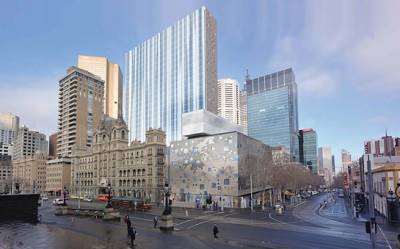home » news » weird and wonderful
DCM pick up sticks
Some kiwis don’t appear to be that impressed with Denton Corker Marshall’s output, presented to them recently at the NZIA conference.
From the Wellington Architecture Centre website :
“The aussie speaker, who should remain nameless, acknowledged that the work of DCM could be summarised as “rods, blades, fins, skins” etc, but did not appear to pick up on the mood of the audience that was more “lego, duplo, cuisenaire”. Similarity is just too mild a word… The DCM work appeared not to be just one work with that similarity, but, from what he showed the audience, all of it. Perhaps I was missing out on some cross cultural resonance, but I would not be that happy to show an international audience how close architecture can be to child’s play.”
So what if DCM do get excited by kids’ toys. They’re not the first and won’t be the last. New Zealand artist Michael Parekohwa used Cuisenaire rods to good effect in “Atarangi II 2005”, a sculpture at the entrance to the Te Tuhi Centre for the Arts in Pakuranga, Auckland.

New South Wales artist Lucy Barker appears dead keen on them too.

Looking further back, even Kazimir Malevych must have been excited by Cuisenaire rods… 30 years before they were invented in Belgium!

In fact Malevych was more guided by his memories of a childhood spent sitting in sugar beet fields near Kiev. “While the peasants, grown-ups and children alike, worked on the plantation all through the summer and fall, I, the future artist, feasted my eyes on the fields and ‘coloured’ workers who were weeding or digging up the beets. The platoons of colourfully-dressed girls stepped in single file across the field.”
Maybe it should be possible to be interested in colourful juxtapositions without being dismissed as a kid’s toy plagiarist.
Posted by Peter on 06.06.09 in weird and wonderful
tags: denton corker marshall
comment
Commenting is closed for this article.



